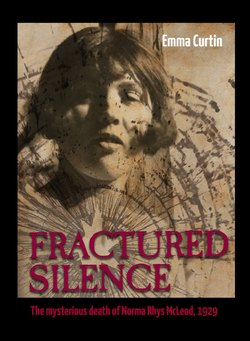Читать книгу Fractured Silence - Emma Curtin - Страница 3
На сайте Литреса книга снята с продажи.
ОглавлениеIntroduction
A promise of sensational developments
On Monday 9 September 1929, Norma Rhys McLeod was getting ready for a relaxing game of golf. But she never made it to the green. By 5pm, the 29 year old was dead. Norma was found at home by her mother, unconscious on her bed with a pair of damp men’s underpants lying across her forehead. She never regained consciousness. A post-mortem examination would reveal she had multiple skull fractures caused by violent trauma to the head.
Norma lived with her brother and parents in Mandeville Crescent, Toorak, in the State of Victoria, Australia. Home was a single-storey red brick villa situated in a fashionable part of one of Melbourne’s wealthiest suburbs. Labelled a ‘well-known socialite’ by news-hungry journalists (armed with assumptions and no apparent knowledge of the woman), Norma’s death immediately sparked interest, not only in the suburb, but across the state and the nation. A mysterious death in affluent Toorak had much more public appeal than any number of tragedies in Melbourne’s seedier suburbs. And the death of a respectable young woman in her own home sent shivers through ‘polite society’, generating a macabre fascination that still sells papers today.
Speculation about Norma’s death was widespread and more than thirty letters from the public sent to police (some anonymously) would escalate attention on the case from the simple one-day reporting of a socialite’s death to a much talked about ‘whodunit’ with sinister undertones.
For over two months the police drip-fed information to reporters, suggesting various theories and teasing the public with promises of “sensational developments”. Readers were tantalised, one noting: “In common with the whole community it has shocked me and is seldom out of my thoughts”. And the Melbourne Herald declared it “one of the most mysterious cases of death by violence in recent years”. The writer of the ‘Golf Associates Gossip’ in Table Talk was more disturbed by the fact that Norma’s death had happened so close to her “going for a round”!
Despite all this attention, however, and ‘advice’ to police, the inquest into Norma’s death returned an open verdict. “The evidence adduced”, said Coroner David Grant, “does not enable me to say how or by what agency the said injuries were inflicted”.
The mystery remained unsolved.
____________________
So, have I solved the case? Well, no, not yet. But does that mean we should give up trying? I don’t believe so. Norma deserves some level of justice or, at the very least, some understanding of her life and what may have led to its tragic end.
The different scenarios of what might have happened to Norma that day and why, as presented in this book and the podcast, reflect the findings of detailed investigations. And the whole case has been examined with the input of a group of modern-day experts – a forensic pathologist, Dr Byron Collins; an ex-homicide detective, Charlie Bezzina; a criminal barrister, Alan Hands (also a relative of Norma); a psycho-physiologist (or document examiner), Elizabeth Martin; a forensic psychologist, Dr Karen Scally; and a graphologist (or handwriting expert), Andrea Scarfe.
But the scenarios presented are not intended to signify ‘case closed’; quite the contrary. For me they represent conversation starters, designed to open the door to additional research avenues and/or theories. There are still many unanswered questions and if there’s one thing I’ve learnt throughout this journey, it’s that the more you share your story, the more perspectives you see and the more insight you gather.
My theories may not sit comfortably with all, raising matters intended to be silenced forever, but they are theories with a solid foundation of evidence. Fracturing that silence might release other information.
Despite the passage of time, it’s not impossible to imagine that new clues may come to light because of this investigation. In the words of author Cyril Connolly: “Those who become obsessed with a puzzle are not the most likely to solve it … the truth can never be ascertained without painful things being said, and because I feel that this account may lead to somebody remembering a fact or a phrase which will suddenly bring it all into focus”.
Maybe that somebody is you …
